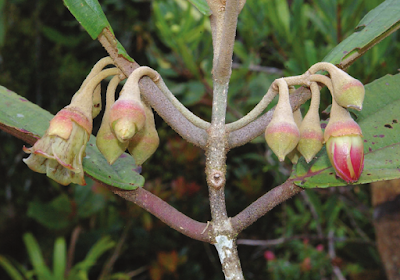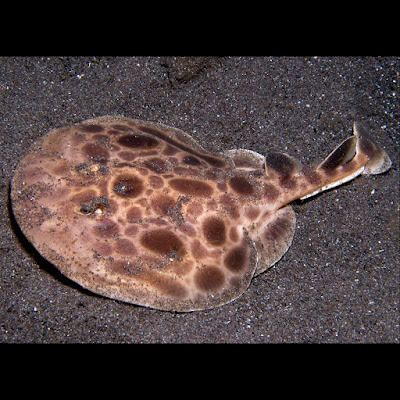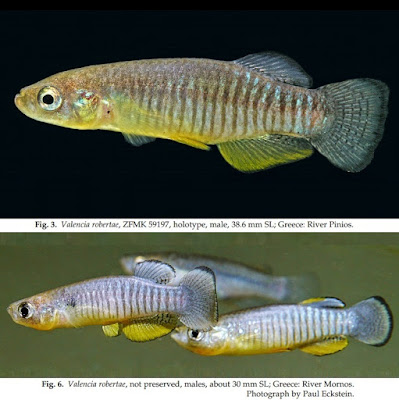[Most Recent Entries] [Calendar View]
Tuesday, December 6th, 2016
| Time | Event | ||||
| 2:26a | [PaleoEntomology • 2016] Perissoderma triangulum & Abrderma gracilentum • New Earwigs in Protodiplatyidae (Insecta: Dermaptera) from the Middle Jurassic Jiulongshan Formation of Northeastern China
Abstract Two new genera, each with a new species, Perissoderma triangulum gen. et sp. nov. and Abrderma gracilentum gen. et sp. nov., of the family Protodiplatyidae are described from the latest Middle Jurassic Jiulongshan Formation of Daohugou, Inner Mongolia, China. They are the first records of Protodiplatyidae from the latest Middle Jurassic Daohugou locality. Both new genera are assigned to Protodiplatyidae based mainly on diagnostic characters of antennae, pronotum, tegmina, tarsi and the distinct long, slender, multi-segmented cerci. We summarize the distributions and ages of all described fossil Archidermaptera and infer that the Dermaptera might have originated in Eurasia and started their diversification and migration to a worldwide distribution. The new taxon of Abrderma gracilentum gen. et sp. nov. provides one more example of an early earwig with well-preserved pentamerous tarsi on the hind leg. Keywords: Dermaptera, Archidermaptera, new genus, new species, insect fossil, Perissoderma, Abrderma Changyue Xing, Chungkun Shih, Yunyun Zhao and Dong Ren. 2016. New Earwigs in Protodiplatyidae (Insecta: Dermaptera) from the Middle Jurassic Jiulongshan Formation of Northeastern China. Zootaxa. 4205(2); 180–188. DOI: 10.11646/zootaxa.4205.2.7 | ||||
| 8:08a | [Ichthyology • 2016] Liniparhomaloptera macrostoma • A New Hillstream Loach (Teleostei: Gastromyzontidae) from Hunan Province, China
Liniparhomaloptera macrostoma, new species, is described from Hunan Province, south China. It is distinguished from its congers by having 8 branched dorsal-fin rays, more lateral line scales (82-100), relatively wider mouth and lower lip separated into two parts.
Wu, Tiejun, Lihui Xiu and Jian Yang. 2016. Liniparhomaloptera macrostoma, A New Hillstream Loach from Hunan Province, China (Teleostei: Gastromyzontidae). Ichthyological Exploration of Freshwaters, An international journal for field-orientated ichthyology. 27(3); 275-282. | ||||
| 8:56a | [Botany • 2015] Chalybea brevipedunculata • A New Species of Chalybea (Blakeeae, Melastomataceae) from Cordillera del Cóndor, the Ecuador-Peru Border
Abstract A new species, Chalybea brevipedunculata, from the Ecuador-Peru border is herein described and illustrated. It differs from all other species in the genus by having inflorescence peduncles that are shorter than their subtending leaf petioles. Keywords: Chalybea, Melastomataceae, Andes, Cordillera del Cóndor, endemic, Ecuador, Eudicots
Chalybea brevipedunculata Penneys, C. Ulloa & D. Fernández, sp. nov. Type:— ECUADOR: Zamora-Chinchipe: Paquisha Cantón. Cordillera del Cóndor. The Machinaza Plateau, 2315 m, 23 Jun 2009 (fl), David Neill & Camilo Kajekai 16913 (Holotype: QCNE!; Isotypes: CAS!, MO!). Diagnosis:— Differs from all other species of Chalybea by having inflorescence peduncles that are shorter than their subtending petioles. Etymology:— The specific epithet refers to the short peduncles of the inflorescences, unique among all species of Chalybea. All other members of this genus have peduncles much longer than their subtending petioles. David Alan Neill, Carmen Ulloa Ulloa, Darrin S. Penneys and Diana Fernández Fernández. 2015. A New Species of Chalybea (Blakeeae, Melastomataceae) from the Ecuador-Peru Border. Phytotaxa. 212(4); 264-270. DOI: 10.11646/phytotaxa.212.4.2 Resumen: Se describe y se ilustra una nueva especie, Chalybea brevipedunculata, procedente de la frontera entre Ecuador y Perú. Se diferencia de todas las demás especies en el género por tener el pedúnculo de la inflorescencia más corto que los pecíolos de las hojas subyacentes | ||||
| 4:07p | [Ichthyology • 2016] Narcine baliensis • A New Species of Electric Ray (Chondrichthyes: Torpediniformes) from southeast Asia Abstract A new species of numbfish, Narcine baliensis, sp. nov., is described from the tropical eastern Indian Ocean from Indonesia. It is superficially similar to N. brevilabiata and N. atzi in aspects of its color pattern, but is distinguished from both congeners in details of its color pattern, in tooth band morphology, and in proportions of its dorsal fins, among other features. Narcine baliensis, sp. nov., is unique in having a dorsal color pattern composed of large, circular, ovoid or elongate dark brown spots or blotches on dorsal disc along with more numerous small (about eye-sized or slightly greater) brownish, subcircular spots, with large blotches and small spots surrounded by a very slender creamy-white pattern, as well as in having broadly circular upper and lower tooth bands of about the same width and shape. The genus Narcine is now composed of 20 valid species, but uncertainty remains concerning the identification and morphological variation of some of its species in the tropical Indo-West Pacific region. Keywords: Pisces, Narcinidae, lesser electric rays, numbfishes, taxonomy, morphology, Indonesia Geographical distribution.— Known from four specimens from southern Indonesia. The holotype was collected during the JETINDOFISH Survey (Gloerfelt-Tarp & Kailola, 1984) from between the islands of Bali and Lombok in depths of about 60 m. The paratypes were collected from the Cilacap fishing port in Central Java from bycatch landings of the local trammel net fishery, which operates off southern Java where it is based. The image of the live specimen was taken farther east on the other side of Wallace's line from the island of Komodo.Narcine baliensis probably occurs at least off most of Java and the western Lesser Sunda Islands, therefore crossing Wallace's line between Bali and Lombok. As far as presently known, N. baliensis and the Australian species of Narcine (= Narcinops Whitley, 1940; Carvalho et al., unpubl.) are the only numbfishes to occur east of the line. Etymology.— Named in reference to the nearby island of Bali, close to the type locality between the islands of Bali and Lombok, Indonesia. Marcelo R. De Carvalho and William T. White. 2016. Narcine baliensis, A New Species of Electric Ray from southeast Asia (Chondrichthyes: Torpediniformes). Zootaxa. 4127(1); DOI: 10.11646/zootaxa.4127.1.8 | ||||
| 4:25p | [Ichthyology • 2014] Valencia robertae • A New Killifish (Cyprinodontiformes: Valenciidae) from southern Greece
Valencia robertae, new species, from the lower Pinios in northern Peloponnese and Mornos Rivers in southern mainland of Greece is distinguished from V. letourneuxi and V. hispanica by having short lateral bars or vertically elongated small blotches along the midlateral body and an almost triangular anal fin in females, prominent lateral bars between the axial blotch and the caudal-fin base and a long anal fin reaching almost or to the first caudal-fin rays in males larger than 27 mm SL. It is also distinguished by 32 fixed, diagnostic nucleotide substitutions in the mtDNA COI barcode region. Freyhof, J., Kärst, H. and Geiger, M. 2014. Valencia robertae, A New Killifish from southern Greece (Cyprinodontiformes: Valenciidae). Ichthyological Exploration of Freshwaters. 24(4); 289-298. |
| << Previous Day |
2016/12/06 [Calendar] |
Next Day >> |















